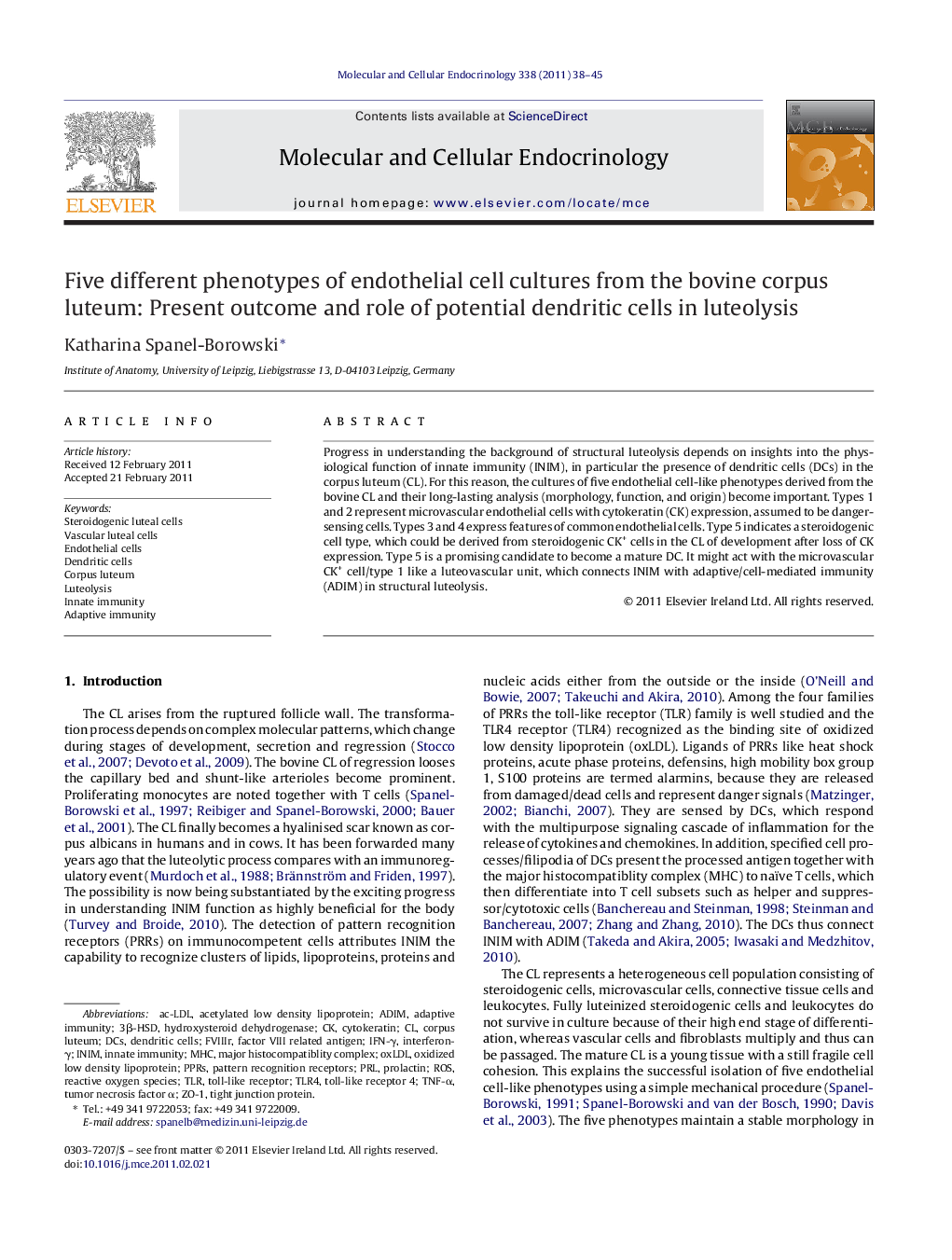| Article ID | Journal | Published Year | Pages | File Type |
|---|---|---|---|---|
| 2196611 | Molecular and Cellular Endocrinology | 2011 | 8 Pages |
Progress in understanding the background of structural luteolysis depends on insights into the physiological function of innate immunity (INIM), in particular the presence of dendritic cells (DCs) in the corpus luteum (CL). For this reason, the cultures of five endothelial cell-like phenotypes derived from the bovine CL and their long-lasting analysis (morphology, function, and origin) become important. Types 1 and 2 represent microvascular endothelial cells with cytokeratin (CK) expression, assumed to be danger-sensing cells. Types 3 and 4 express features of common endothelial cells. Type 5 indicates a steroidogenic cell type, which could be derived from steroidogenic CK+ cells in the CL of development after loss of CK expression. Type 5 is a promising candidate to become a mature DC. It might act with the microvascular CK+ cell/type 1 like a luteovascular unit, which connects INIM with adaptive/cell-mediated immunity (ADIM) in structural luteolysis.
► Early structural luteolysis might depend on innate immunity function, in particular on the presence of dendritic cells in the corpus luteum. ► We characterize two out of five endothelial-cell-like phenotypes as candidates of danger-sensing function. ► The concept is forwarded that the microvascular cytokeratin (CK) -positive type 1 and the steroidogenic type 5 after loss of CK form a luteovascular unit. ► It is activated by a rapid simultaneous response to focal ischemia and supplies the bridge to adaptive immunity.
